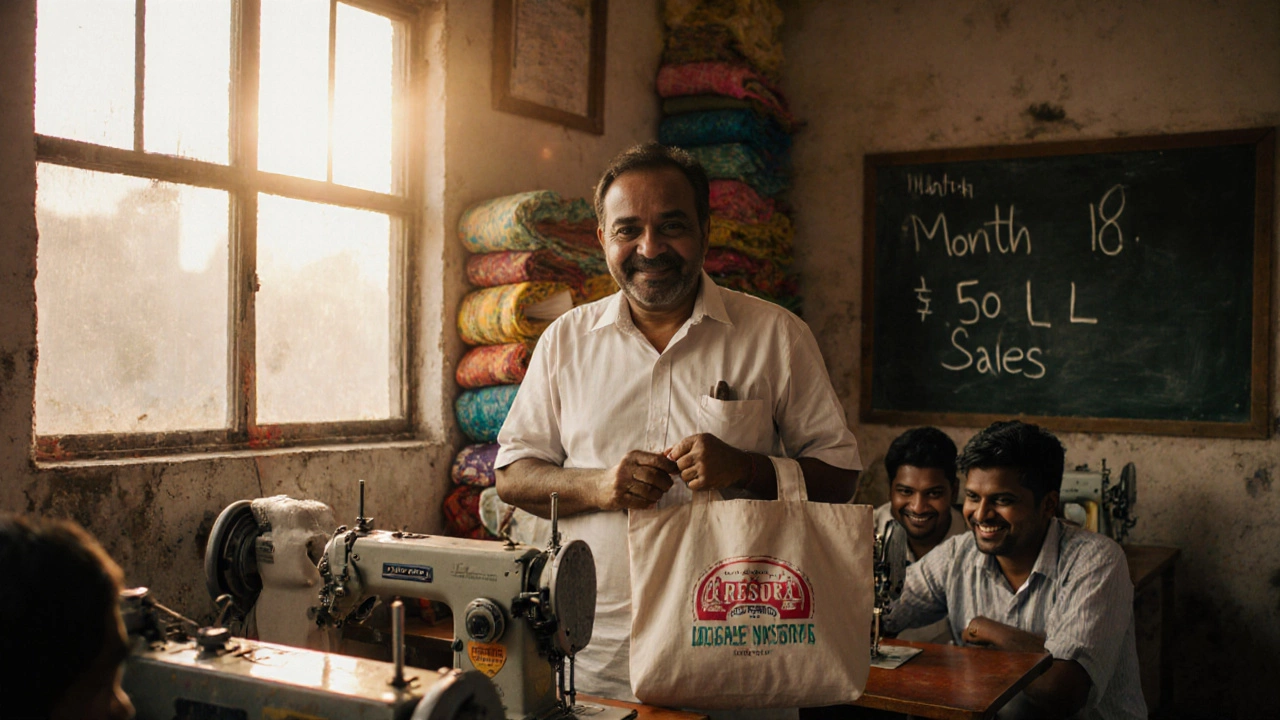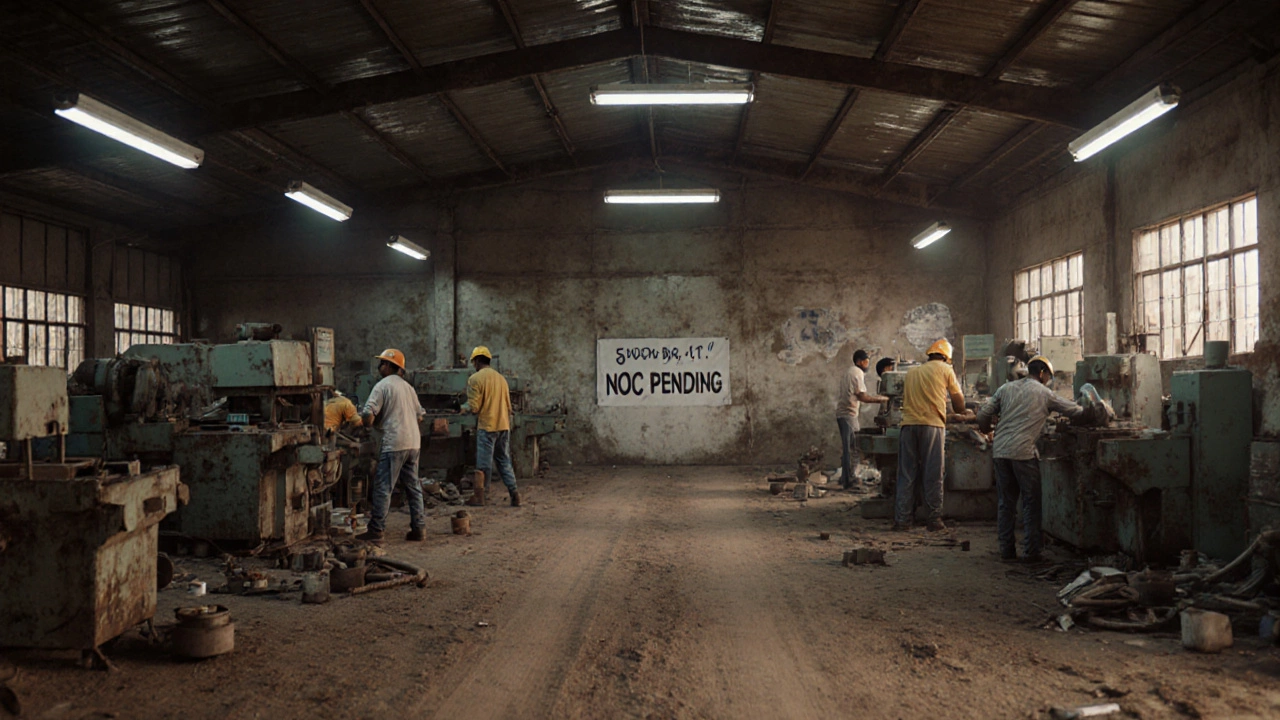Small Factory Setup Cost Calculator
Calculate Your Small Factory Costs
Get an estimate of total setup costs for a small factory in India based on your specific situation.
Estimated Setup Costs
₹0
Total estimated setup costs
Cost Breakdown
Setting up a small factory isn’t just about buying machines and hiring workers. It’s about understanding hidden costs, local regulations, and real-world surprises that can blow your budget wide open. I’ve seen too many people start with a $20,000 plan and end up spending $80,000 because they missed one key thing: land permits. If you’re thinking about launching a small factory in India-whether it’s for food packaging, metal fabrication, or electronics assembly-you need to know what actually adds up, not just the price tags on equipment.
Land and Building: The Biggest Hidden Cost
You can’t run a factory without space. But land isn’t just about buying or renting. In Tier-2 cities like Coimbatore, Jaipur, or Indore, a 5,000 sq. ft. industrial plot might cost between ₹25 lakh and ₹50 lakh. In Bangalore or Pune, it’s closer to ₹80 lakh to ₹1.5 crore. Renting is cheaper upfront-₹30-₹60 per sq. ft. per month-but you’re paying for someone else’s asset. And if you need a shed with high ceilings for machinery, expect to pay 20-30% more.
Don’t forget zoning. Many areas classify small factories as ‘industrial use’ only in designated clusters. If you pick a location without proper industrial clearance, your factory could be shut down. In Tamil Nadu, for example, you need a pollution control board NOC before you even break ground. In Uttar Pradesh, you need approval from the District Industries Centre. Skipping this step isn’t just risky-it’s illegal.
Machinery and Equipment: What You Actually Need
Equipment costs vary wildly depending on what you’re making. A small food processing unit with a mixer, filler, and sealing machine might cost ₹15-25 lakh. A metal stamping unit with a 50-ton press, CNC cutter, and welding station? That’s ₹40-70 lakh. Electronics assembly? You’ll need SMT machines, reflow ovens, and AOI testers-easily ₹50 lakh minimum.
Here’s the catch: new machines aren’t always better. Many small manufacturers buy used equipment from shuttered factories in Gujarat or Maharashtra. A 5-year-old CNC machine in good condition can cost half the price of a new one and still run for another 10 years. Just make sure it comes with service records and a warranty from the seller. Avoid machines with no documentation-you’ll end up paying more in repairs than you saved.
Licenses, Permits, and Compliance
This is where most new factory owners get shocked. You can’t just start production. You need:
- MSME registration (free, but mandatory for subsidies)
- Factory License under the Factories Act, 1948 (₹5,000-₹15,000)
- Pollution Control Board NOC (₹10,000-₹50,000)
- Fire Safety Certificate (₹5,000-₹20,000)
- ESI and EPF registration (if you hire 10+ employees)
- GST registration (free, but mandatory)
- Local municipal trade license (₹2,000-₹10,000)
Some states offer bundled applications through their MSME portals. In Karnataka, you can apply for 5 permits in one go via the Karnataka Industrial Policy Portal. In Haryana, the process takes 45 days minimum. Plan for 3-6 months just to get paperwork done. Rushing this leads to fines, shutdowns, or worse-being blacklisted.
Utilities: Power, Water, and Waste
Power isn’t just about plugging in machines. A small factory using 3-phase electricity will need a 30-50 kVA connection. The setup fee? ₹1.5-3 lakh. Monthly bills? ₹40,000-₹80,000 depending on usage. Many factories install solar panels to cut costs-₹8-12 lakh for a 10 kW system, but you save 40-60% on electricity within 2 years.
Water supply matters too. If you’re making textiles or food, you’ll need 5,000-10,000 liters daily. Municipal supply isn’t always reliable. Many factories install borewells (₹1-2 lakh) and water treatment units (₹3-5 lakh). Waste disposal is another hidden cost. Chemical waste? Hazardous waste? You need a licensed transporter. In Maharashtra, fines for illegal dumping start at ₹50,000 per incident.

Labour: Wages, Training, and Turnover
Minimum wage in India varies by state. In Karnataka, unskilled laborers earn ₹250-₹350 per day. Skilled workers (welders, machine operators, QC inspectors) earn ₹8,000-₹15,000 monthly. For a small factory with 15-20 employees, payroll is ₹1.5-3 lakh per month.
But wages aren’t the whole story. You need to train them. A 2-week training program for machine operators costs ₹10,000-₹25,000. And turnover? It’s high. In small factories, 30-40% staff leave within a year. Budget for recruitment, onboarding, and retraining every 6-8 months. One owner I spoke to spent ₹6 lakh in a year just replacing workers.
Raw Materials and Inventory
You’ll need to stock raw materials before you make your first product. For a plastic injection unit, that’s pellets-₹50-₹100 per kg. For a food unit, it’s spices, packaging, preservatives. A typical small factory needs ₹5-15 lakh in initial inventory. That’s money tied up for 3-6 months before you see sales.
Don’t overstock. I’ve seen factories collapse because they bought 6 months’ worth of raw material and then lost a major client. Start small. Buy in batches. Build relationships with local suppliers who offer credit terms. In Ludhiana, many textile suppliers give 15-30 days credit to new manufacturers.
Working Capital: The Lifeline
Most people forget this. Even if you have machines, land, and workers, you need cash to keep running. Payroll, utilities, raw materials, taxes-they all come before you get paid by customers. Most small factories need 3-6 months of operating expenses as working capital. For a ₹1.5 crore factory, that’s ₹30-60 lakh in reserve.
Without this buffer, you’re one delayed payment away from shutting down. Banks won’t give you a loan just because you have a factory. They want cash flow statements, sales projections, and collateral. Start with your own savings. Use government schemes like the Prime Minister’s Employment Generation Programme (PMEGP) to get up to ₹25 lakh in subsidy for micro units.

Total Cost Breakdown: Real Numbers
Here’s what a realistic small factory setup looks like in India (2025):
| Item | Cost Range (₹) | Notes |
|---|---|---|
| Land & Building (rented) | ₹15-30 lakh | 5,000 sq. ft., 3-year lease |
| Machinery & Equipment | ₹30-70 lakh | Depends on product type |
| Licenses & Permits | ₹1-3 lakh | Includes all statutory clearances |
| Utilities Setup (power, water, waste) | ₹5-10 lakh | Includes solar, borewell, treatment |
| Initial Labour (3 months) | ₹5-8 lakh | 15-20 staff, including training |
| Raw Materials & Inventory | ₹5-15 lakh | 3-6 months stock |
| Working Capital (6 months) | ₹20-40 lakh | Operating expenses before sales |
| Total | ₹80-1.75 crore | Realistic range for most small factories |
That’s not a typo. Even a "small" factory costs at least ₹80 lakh. Most end up spending ₹1.2 crore. The cheapest setups-like a 10-person packaging unit in a rented shed-still need ₹50 lakh minimum. If you’re planning under ₹30 lakh, you’re either in the wrong business or not accounting for hidden costs.
How to Reduce Costs Without Cutting Corners
You don’t need to spend a crore to start. Here’s how smart owners cut costs legally:
- Use government subsidies: PMEGP, SIDBI, and state MSME schemes offer 25-35% capital subsidy
- Lease machinery instead of buying: Companies like Tractor Supply Co. and local vendors offer rent-to-own plans
- Start with 1-2 products: Don’t try to make 10 things at once. Focus, test, then scale
- Use local suppliers: Avoid importing. A ₹10,000 part from China might cost ₹4,000 from a vendor in Surat
- Share space: Some industrial parks allow multiple small units to share utilities and security
One factory in Mysore started with just ₹12 lakh. They rented a 2,000 sq. ft. shed, bought 2 used sewing machines, hired 4 workers, and made custom bags for local brands. In 18 months, they scaled to ₹50 lakh monthly sales. Their secret? No fancy equipment. Just consistency, quality, and customer trust.
What Happens If You Underfund It?
Most small factories fail within 2 years-not because of bad products, but because they ran out of cash. I’ve seen owners take loans from moneylenders at 2% monthly interest just to pay wages. They lose control. They compromise on quality. They stop paying taxes. And then the government steps in.
Don’t let that be you. If you don’t have at least ₹50 lakh in hand, wait. Build a prototype. Test demand. Get pre-orders. Start smaller. A factory isn’t a dream-it’s a business. And businesses need fuel to run.
Can I set up a small factory with ₹20 lakh?
It’s extremely difficult. ₹20 lakh might cover basic machinery and a few months of raw materials, but you won’t have enough for land, permits, utilities, or working capital. Most viable small factories start at ₹50-80 lakh. If you have less, consider a micro-unit under PMEGP, which offers subsidies, or start as a home-based unit before scaling.
Which state is cheapest to set up a small factory?
Uttar Pradesh, Madhya Pradesh, and Bihar offer lower land prices and generous subsidies under their MSME policies. For example, UP offers up to 30% capital subsidy and free land in industrial clusters. But infrastructure (power, water, transport) can be unreliable. Tamil Nadu and Gujarat have higher costs but better logistics and faster approvals. Choose based on your product’s supply chain needs.
Do I need a loan to start a small factory?
Not necessarily, but it helps. Many owners use personal savings or family funds first. If you need a loan, apply through SIDBI or a public sector bank under the CGTMSE scheme, which offers collateral-free loans up to ₹2 crore for MSMEs. Private lenders charge higher interest. Avoid informal lenders-they trap you in debt cycles.
How long does it take to set up a small factory?
With all paperwork done in advance, machinery installation takes 4-8 weeks. But getting permits, land, and approvals can take 3-8 months. In states like Karnataka and Telangana, online portals speed things up. In others, you’ll be running between offices for months. Plan for 6-10 months total before you start production.
Can I make a profit in the first year?
Yes, but it’s rare. Most small factories break even between 12-24 months. Your first year is about building systems, customer trust, and refining operations. Profit depends on your product margins, sales volume, and cost control. A food processing unit with high-demand items like pickles or snacks can turn profitable faster than a machinery assembly unit.
Next Steps: What to Do Now
Stop thinking about machines. Start with this:
- Define your product clearly-what exactly will you make? Who will buy it?
- Visit 3 existing small factories in your region. Talk to owners. Ask about their biggest surprise cost.
- Visit your district’s MSME office. Get the list of required permits and subsidy schemes.
- Calculate your minimum viable budget-not your dream budget.
- Start small. Test demand before you build a factory.
Setting up a factory isn’t about how much money you have. It’s about how wisely you spend it. The best small factories aren’t the biggest-they’re the ones that lasted because they planned for the unexpected.





